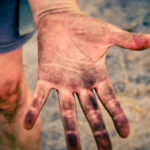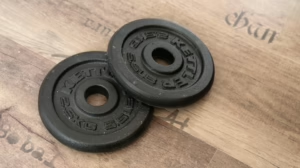Athletic Injuries and Muscle Spasms: How to Manage Recovery
Athletic injuries and muscle spasms are prevalent issues among athletes and physically active individuals. Understanding how to manage these conditions effectively is crucial for recovery and returning to peak performance. This article explores the types, causes, prevention strategies, and recovery techniques for athletic injuries and muscle spasms.
Understanding Athletic Injuries
Common Types of Athletic Injuries
Athletic injuries can be classified into two main categories: acute injuries and chronic injuries.
-
Acute Injuries:
These occur suddenly during activity. Common types include:- Sprains: Injuries to ligaments caused by sudden twisting or impact.
- Strains: Injuries to muscles or tendons resulting from overstretching.
- Fractures: Breaks in bones, often due to falls or direct trauma.
- Tendinitis: Inflammation of a tendon, usually caused by overuse.
- Chronic Injuries:
These develop gradually over time, often due to repetitive use or inadequate recovery. Examples include:- Shin Splints: Pain along the shin bone from repetitive stress.
- Bursitis: Inflammation of bursae, causing pain and swelling.
- Stress Fractures: Tiny cracks in bones due to overuse.
Causes of Athletic Injuries
The causes of athletic injuries can be multifactorial:
- Poor Technique: Incorrect form in sports can increase strain on certain body parts. For example, improper running form may lead to knee injuries.
- Inadequate Conditioning: Athletes who do not prepare their bodies for physical strain are at greater risk. Strength and flexibility training are crucial.
- Environmental Factors: Surfaces, weather conditions, and equipment can influence injury risk. For instance, running on uneven terrain may increase the risk of ankle sprains.
- Fatigue: Exhaustion can impede coordination, leading to mishaps that cause injuries.
Symptoms of Athletic Injuries
Depending on the type of injury, symptoms may vary but often include:
- Pain and tenderness
- Swelling or bruising
- Limited range of motion
- Inability to bear weight on the affected area
If an athlete experiences these symptoms, they should seek medical attention.
Understanding Muscle Spasms
What are Muscle Spasms?
Muscle spasms are involuntary contractions of a muscle or group of muscles. They can be painful and may occur as a result of various factors.
Types of Muscle Spasms
Muscle spasms can be categorized into several types:
- Tonic Spasms: Continuous muscle contractions that last for a prolonged period.
- Clonic Spasms: Rapid alternation between contraction and relaxation, often seen in conditions like seizures.
Causes of Muscle Spasms
Muscle spasms can be triggered by:
- Overuse or Strain: Prolonged physical activity may lead to spasms, especially without proper warm-up or cool-down.
- Dehydration: Loss of body fluids and electrolytes can lead to muscle cramps.
- Nutritional Deficiencies: Lack of essential nutrients like potassium, calcium, and magnesium can predispose the body to spasms.
- Nervous System Disorders: Conditions such as multiple sclerosis or spinal cord injuries can lead to spasms.
Symptoms of Muscle Spasms
Common symptoms associated with muscle spasms include:
- Sudden, intense pain in the affected muscle
- Hardening of the muscle
- A palpable knot under the skin
Analysis of Injury Prevention
Warm-Up and Cool Down
A proper warm-up increases blood flow to muscles and prepares them for activity. Dynamic stretches are effective in preparing muscles for action, whereas static stretches following exercise aid in recovery.
Strength and Flexibility Training
Routine strength training can enhance muscle stability and resilience, reducing the chance of injury. Likewise, flexibility exercises help maintain a full range of motion and prevent stiffness.
Proper Technique and Equipment
Using correct techniques and proper equipment tailored to the specific sport is essential. Coaches and trainers play a vital role in educating athletes about these aspects.
Hydration and Nutrition
Staying well-hydrated and consuming a balanced diet rich in minerals and nutrients is vital for optimal muscle function and recovery. Electrolyte balance is especially important in endurance sports.
Rest and Recovery
Rest days are crucial for muscle recovery. Overtraining can lead to fatigue and increase the risk of both injuries and muscle spasms.
Managing Recovery from Athletic Injuries
Initial Care: R.I.C.E. Protocol
The first response to an acute injury typically involves the R.I.C.E. method:
- Rest: Avoid using the injured area.
- Ice: Apply ice packs to reduce swelling and pain.
- Compression: Use elastic bandages to minimize swelling.
- Elevation: Elevate the injured area above the heart to reduce swelling.
Medical Evaluation
For severe injuries, a medical evaluation is crucial to rule out significant issues like fractures or dislocations. Imaging tests such as X-rays or MRIs may be required to assess the extent of the damage.
Rehabilitation
Once initial care is provided, a rehabilitation program is essential for recovery. This may include:
- Physical Therapy: A professional can develop specific therapeutic exercises to restore strength, flexibility, and range of motion.
- Progressive Loading: Gradually increasing activity levels can help muscles adapt and regain strength safely.
Pain Management
Managing pain is critical for recovery. Options may include:
- Over-the-Counter Medication: Nonsteroidal anti-inflammatory drugs (NSAIDs) like ibuprofen can alleviate pain and reduce inflammation.
- Therapeutic Modalities: Techniques such as ultrasound therapy and electrical stimulation can promote healing.
Managing Muscle Spasms
Immediate Treatment
For muscle spasms, immediate treatment options include:
- Gentle Stretching: Carefully stretching the affected muscle may relieve tension.
- Heat Therapy: Applying heat, such as a warm towel or heating pad, can promote relaxation.
Long-Term Management
To minimize occurrences of muscle spasms:
- Hydration: Drink water or electrolyte-rich fluids before, during, and after exercise.
- Balanced Diet: Ensure an intake of essential vitamins and minerals that support muscle health.
- Regular Stretching and Conditioning: Consistent flexibility training can reduce susceptibility to spasms.
Role of Nutrition in Recovery
Nutrition plays a pivotal role in recovery from both athletic injuries and muscle spasms. Athletes should focus on:
- Protein: Essential for muscle repair and recovery. Sources include lean meats, fish, eggs, and legumes.
- Endurance and Energy Foods: Carbohydrates are crucial for energy replenishment. Whole grains, fruits, and vegetables should be included.
- Electrolytes: Replenishing sodium, potassium, and magnesium can prevent spasms and maintain muscle function.
The Importance of Mental Health in Recovery
Emotional and psychological factors can influence recovery from athletic injuries. Athletes may experience feelings of frustration, anxiety, or depression due to prolonged inactivity. It is essential to address these issues through:
- Counseling: Engaging with sports psychologists can provide strategies for coping with mental distress.
- Mindfulness Practices: Techniques such as meditation or yoga can aid relaxation and focus on positive aspects of recovery.
Conclusion
Understanding athletic injuries and muscle spasms is vital for athletes and those engaged in physical activity. Adequate prevention, immediate management, and long-term recovery strategies are essential for returning to optimal performance.
By focusing on proper technique, hydration, nutrition, and mental health, athletes can enhance their resilience to injuries and muscle spasms, paving the way for a healthier and more fulfilling athletic journey.
References
- Haff, G. G., & Triplett, N. T. (2016). Essentials of Strength Training and Conditioning. Human Kinetics.
- McCall, A., et al. (2020). Epidemiology of Injuries in Sport. The Sport and Exercise Scientist.
- Gleeson, M., et al. (2017). Immunity, Inflammation, and Injury in Exercise. Exercise Immunology Review.
- Karduna, A., et al. (2015). Principles of Sport Psychology. Routledge.
- Hoffman, J. R., & Chaplain, D. (2014). Nutrition and Recovery in Sports. Strength and Conditioning Journal.
By integrating these components into their training and recovery routines, athletes can optimize their performance while minimizing the risk of injury and muscle spasms.


























Add Comment